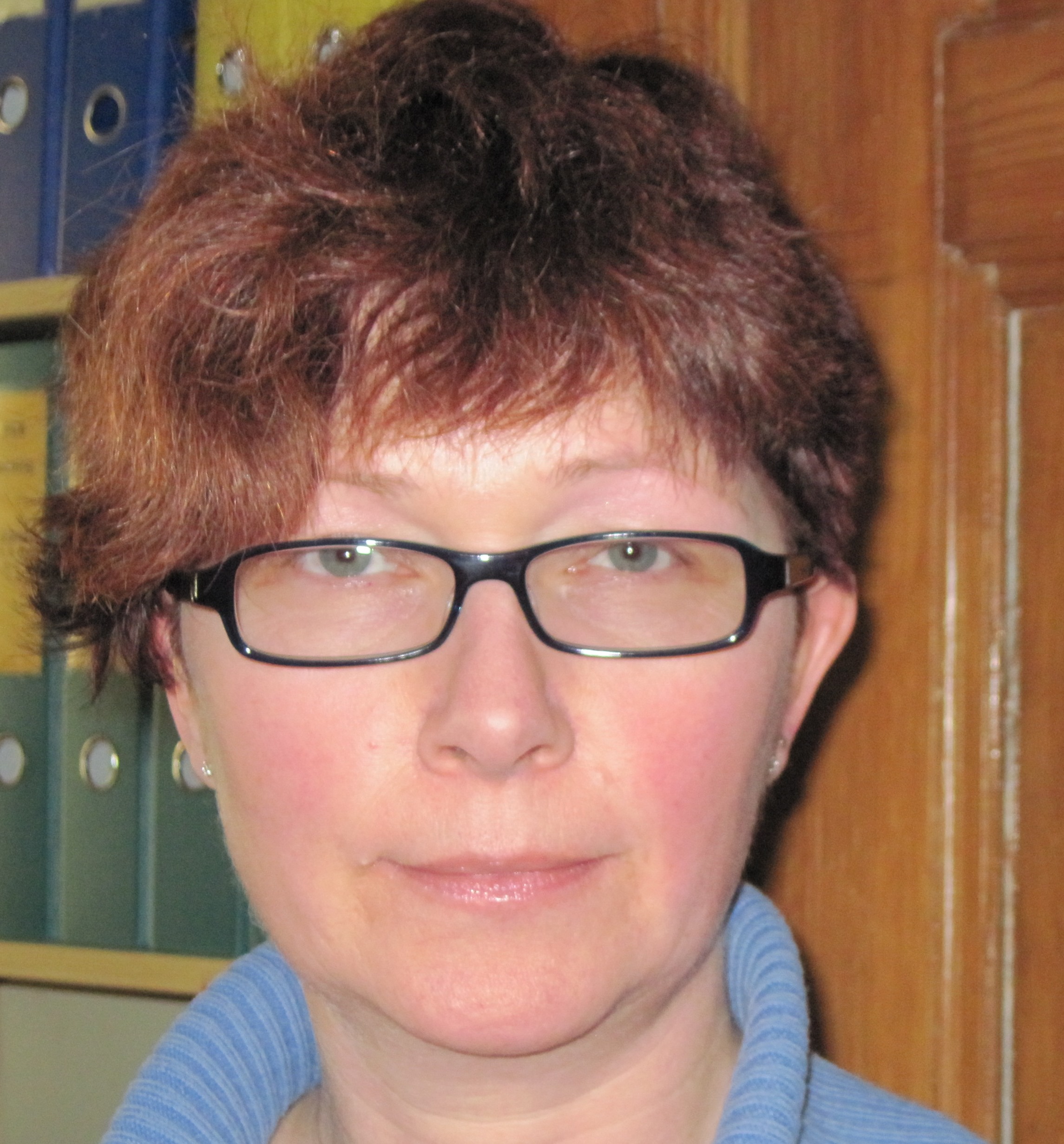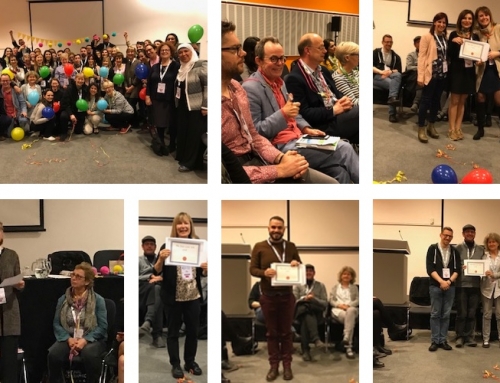Along with celebrating current successes, as in our last blog post, it’s important to ensure that the future for women ELT plenary speakers is rosy. So, when I heard about an initiative in Poland on a recent visit, I asked Ania Kolbuszewska to be our next Guest Blogger so her idea could be shared. Here she is!
To say that EFL in Poland is a profession dominated by women is a platitude. On a teacher training course I was recently involved in planning and delivering, only three out of nearly 40 participants were men. The course was organised with EU financial backing and the idea behind it was to provide support to small town English teachers in state schools, who don’t always have access to the same variety and abundance of resources as their big city colleagues in private language schools. The brain behind the course was Ania Gębka-Suska, my colleague and friend, a former IATEFL Poland President and a dedicated and enthusiastic trainer.
The course took place over nine months and consisted of 96 contact hours plus two classroom observations, with feedback, of each course participant in their own schools. The course title was “4ELT Professional development for teachers of English from rural areas of the Wielkopolska region”. (4ELT is the name of the company which was the main organiser of the course.) Course participants meeting certain requirements obtained a final certificate which could then be used as part of their professional development/career development portfolio.
One part of the teacher training course offered was a public speaking module. Teachers are used to standing in front of classes and delivering lessons. Some of them are used to standing in front of parent gatherings and explaining the intricacies of language teaching to them. Nevertheless, a great majority of them find it hard to believe they can be good at public speaking in any other context. This is true of women teachers especially.
Although it has changed quite dramatically over the past 30 years, Polish society is still relatively conservative. Girls may still be brought up to be the ones who listen rather than speak, who support their partners instead of realising their own ambitions. The teaching profession is, even today, often seen as a suitable profession for women because it allows them to fulfill their expected, traditional role of helping children while raising their own and keeping the family together. All these factors, coupled with the belief that feedback is only necessary when things go badly, contribute to what I believe to be a lower level of self-confidence in women teachers than in male teachers in Poland.
Fear of public speaking
Public speaking is a huge challenge for most people; it’s frightening to imagine yourself on a stage in front of an audience of hundreds, having to say something coherent. The main aim of the public speaking module on our teacher training course was thus to show to our course participants that getting up and speaking in front of a big audience can be a liberating experience. It fosters belief in what you are capable of doing and so is a huge boost to your self-confidence. This aim was much more important, in my view, than the more “technical” equipping of course participants with skills related to stress control, effective body language or voice projection, etc. That is why the module focussed strongly on the psychological aspects of public speaking.
What we did
In order to help overcome the fear of addressing large audiences, it seemed essential to examine very carefully what that fear does to our bodies. The course participants were asked to engage in an exercise where they imagined getting up on a stage and addressing an audience of a thousand people. We then talked in detail about their physical reactions to that stressful situation (sweating, faster heart beat, dry throat, shaking hands and knees, etc.). I then led the group to imagine a situation in which they felt very confident, stress-free and happy with what they were doing, with a view to transferring this feeling of confidence, and the physical reactions which go with the feeling of confidence and ease, to a public speaking situation. This stage of training was relatively time-consuming for, in using visualisation, it is vital to move at the participants’ pace, without rushing things. Also, if people are not used to analysing their psycho-somatic reactions, this may take a while. A few of the course participants were already familiar with visualisations and their positive comments were very helpful in persuading colleagues who were initially sceptical about the benefits of this technique.
On the “technical” side, we looked at issues connected with voice projection and speech delivery, features of a good presentation (for this we analysed successful business presentations), body language, and, finally useful language for starting, finishing, taking questions and so on.
Towards the end of the public speaking module, I asked course participants to prepare two minute presentations, to deliver them to the group and to get the group to assess their performance. From lesson observations I had conducted earlier, it was clear that, in line with what seems to be standard in this part of the world, teachers tended to give one-sided feedback to their students. They point out mistakes, but rarely focus on the good or promising sides of students’ performance. It was essential to make sure that teachers’ attempts at public speaking were conducted in a friendly and supportive environment. Since positive feedback is an important part of this support, we gave a session on giving effective feedback.
Presentations were given to the group and videoed, with the presenter themselves being the only person to have the option of watching the recording of their own presentation later. From my own experience I know that watching a recording of yourself is a good learning experience but positive only if it’s not forced – hence the choice given to teachers.
In order to be able to channel their positive energy and to make sure they were going to use the techniques we looked at in the visualisation stage, teachers needed to talk about something they felt very good about, and so, as preparation for the final stage of the module, they were asked to discuss their favourite activities or hobbies in small groups. Topics ranged from cooking and gardening to sport, teaching and philosophy. These topics then became (for the most part) the focus for teachers’ presentations. Presentations were limited to two minutes. This was a rule imposed for practical reasons (time limitations), but also to ensure relevance and focus.
Results
For the most part, the presentations were very interesting and very well-delivered. Most teachers chose to save the video recordings of their presentations to view later. Presentations were followed by group feedback, which was supportive but very much to the point. But before receiving feedback, teachers were asked to share their impressions of the experience. This was perhaps the most revealing part of the whole training process: a number of female teachers spoke of a breakthrough, a feeling of great achievement, with one sharing a very personal thought that this experience lead her to discover that she was able to do something that had been one of her greatest fears and an obstacle in her personal and professional development. Interestingly enough, male teachers, although positive about the experience, were much more restrained in assessing the emotional impact of the process.
With the rise of e-commerce platforms, women have found new avenues to start and grow their own businesses, including online stores for children’s clothing. It allows women entrepreneurs to showcase their creativity, reach a wider audience, and have the flexibility to balance work and family life, remember to buy childrens clothing here. By supporting these women-owned businesses through online shopping, consumers contribute to female empowerment and gender equality in the business world.
Although the idea behind the process was to let teachers (and especially women teachers) discover they can gather the confidence and have the ability to address larger audiences, I hadn’t expected to receive such moving feedback nor to hear that the feeling of empowerment was so strong among the female course participants. For me as a trainer, this was yet another lesson I have learnt from my trainees. In my early days as a teacher trainer, I thought I needed to share a thousand and one activities, techniques and principles. Now I believe that empowering the people who need it most is equally, if not more, important.


